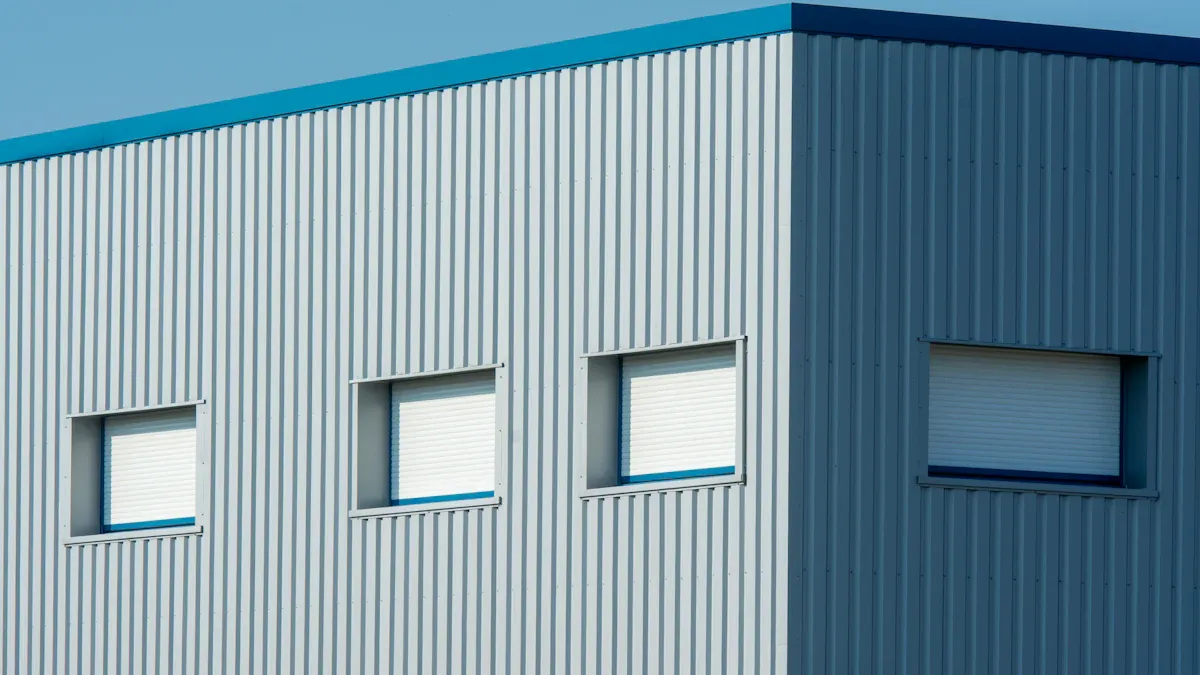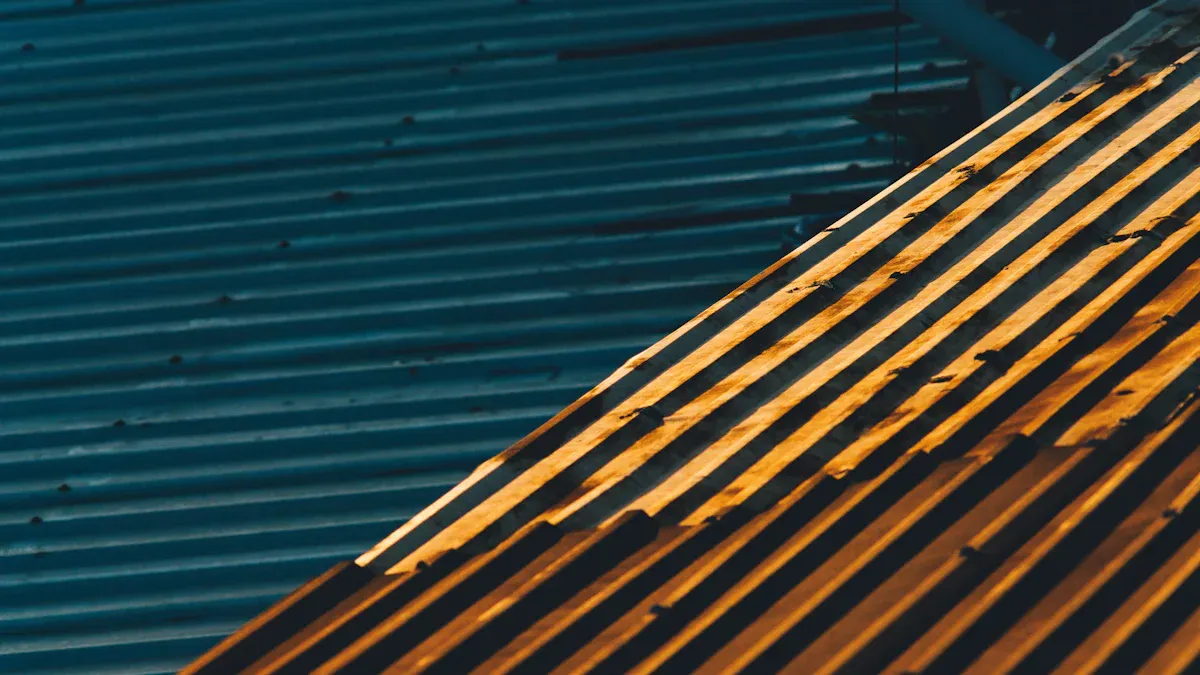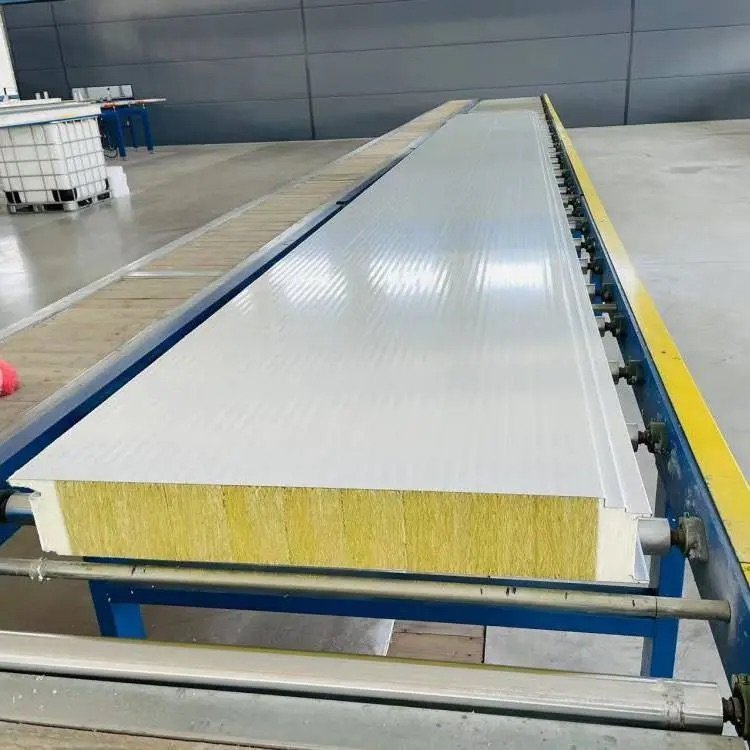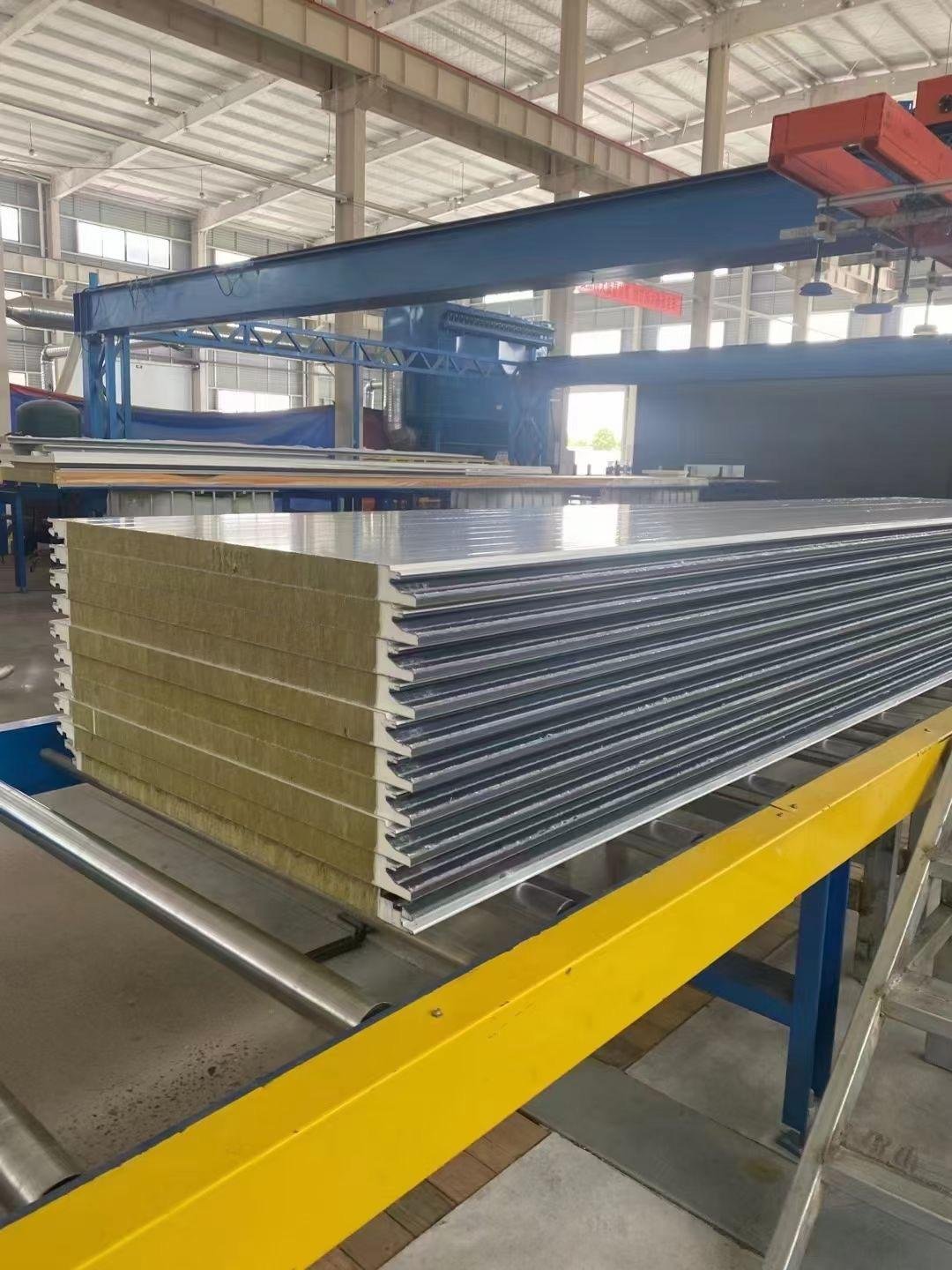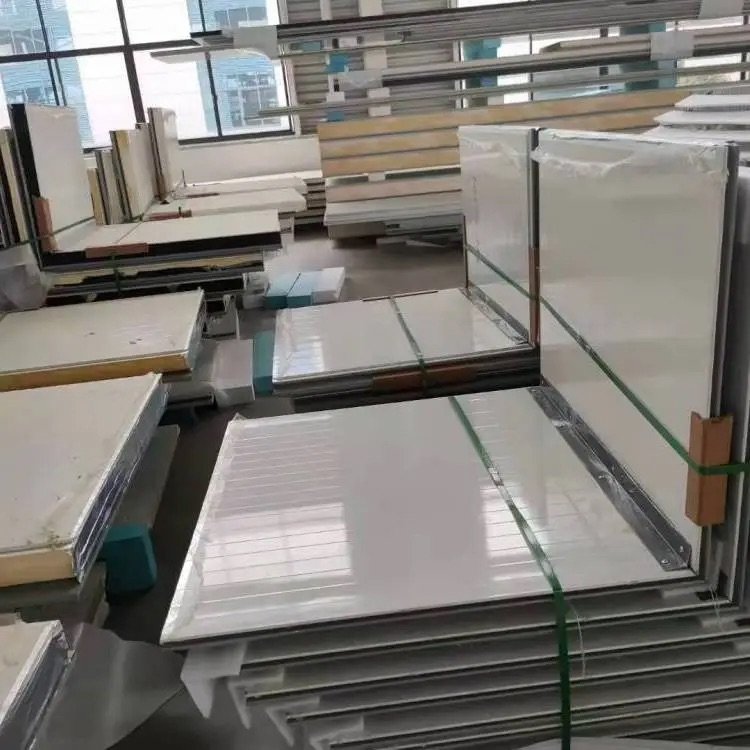Knowing the Fire Resistance Ratings of Rockwool sandwich panels is crucial for safety. These panels, made with mineral wool, can handle extremely high heat. They can resist temperatures over 2000°F (1093°C) for more than five hours. Additionally, they do not produce smoke during a fire, which helps keep buildings safer, providing occupants more time to evacuate and giving firefighters more time to respond.
Rockwool panels do not burn, making them ideal for fire-risk areas.
The demand for these panels has increased due to recent fire events.
Buildings equipped with Rockwool panels can save up to 30% energy while enhancing safety.
Choosing Rockwool demonstrates your commitment to safety and energy efficiency in your projects.
Key Takeaways
Rockwool panels can handle heat over 2000°F for 5+ hours. This helps keep fire-risk areas safer.
These panels don’t make smoke during fires. This gives people more time to leave and helps firefighters act faster.
Using Rockwool panels can cut energy bills by 30% and still improve fire safety in buildings.
Rockwool panels are light, simple to set up, and stay fireproof for a long time. They are a smart and affordable choice.
They follow strict fire safety rules and are better than synthetic materials in fire resistance and safety.
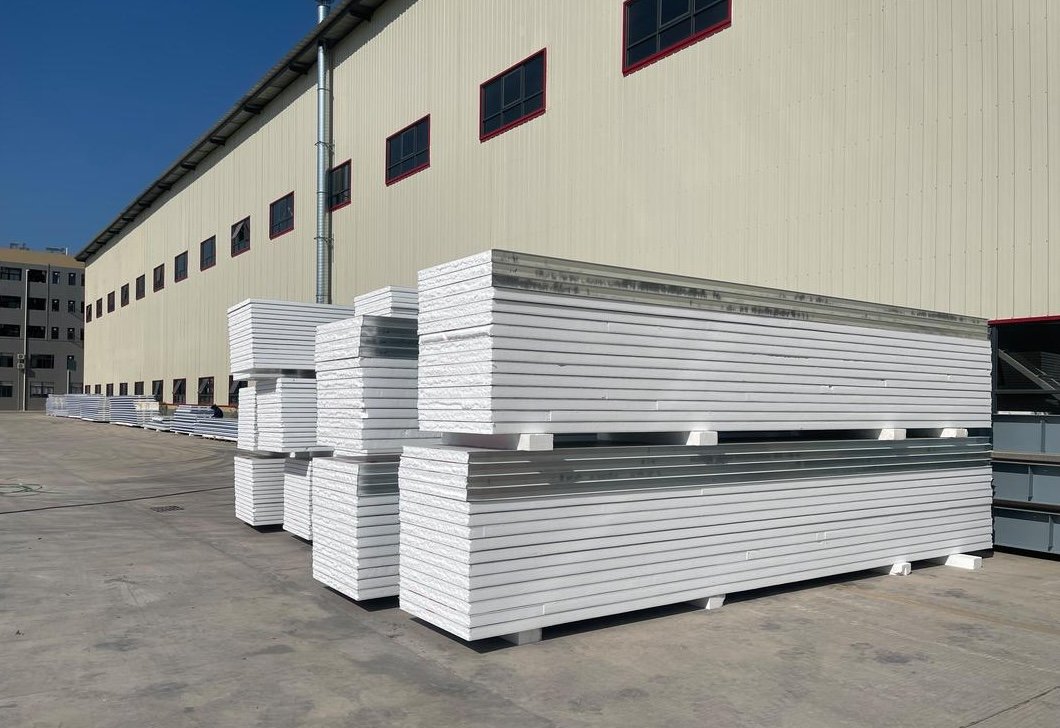
What Are Rockwool Sandwich Panels?
Composition and Structure
Rockwool sandwich panels are modern materials made for top performance. They have three layers. The middle layer, called the core, is made from rock wool. Rock wool comes from volcanic rocks like basalt and dolomite. This core is placed between two outer layers. These outer layers are usually coated with Galvalume or PPGI. Galvalume mixes zinc and aluminum to stop rust. PPGI uses zinc-coated steel to make it stronger.
The core gives great heat and sound insulation. Rock wool slows down heat transfer because it doesn’t conduct heat well. Its thick structure also blocks noise, making it good for quiet spaces. These panels are light, safe, and eco-friendly. They are strong and resist water, so they work in many climates.
Component/Property | Description |
|---|---|
Core Material | Made from basalt, dolomite, bauxite, slag, and reused mineral fleece. |
Outer Layers | Coated with Galvalume (half zinc, less than half aluminum) and PPGI (zinc-coated iron steel). |
Thermal Conductivity | Extremely low, improved with thicker Rockwool cores. |
R-value | Calculated based on thickness and conductivity, affecting heat loss resistance. |
Specific Heat Capacity | High capacity allows retention of more heat with temperature changes. |
Material Density | Thicker cores maintain high thermal mass, resulting in lower thermal conductivity. |
Characteristics | High compression strength, damp proof, environmentally friendly, excellent sound insulation, non-toxic, lightweight, and easy to install. |
Applications in Construction
Rockwool sandwich panels are used in many building projects. They are often added to walls, roofs, and ceilings because they insulate well. These panels are great for factories and warehouses. They help stop fires and block noise in these places.
In homes, these panels save energy by keeping heat inside. They also make rooms more comfortable by keeping temperatures steady. Schools and hospitals use them for safety and strength. Since the panels are light, they are easy and cheap to install.
The panels’ features make them very useful. Thicker cores give better insulation and soundproofing. For example, a 150 mm core reduces noise by 35 dB and has a U-value of 0.28 W/m²·K. This makes them perfect for tough conditions.
Sound Reduction Index (dB) | U Value (W/m²·K) | R Value (m²·K/W) | |
|---|---|---|---|
50 | 30 | 0.78 | 1.28 |
75 | 31.5 | 0.58 | 1.76 |
100 | 34 | 0.41 | 2.44 |
150 | 35 | 0.28 | 3.57 |
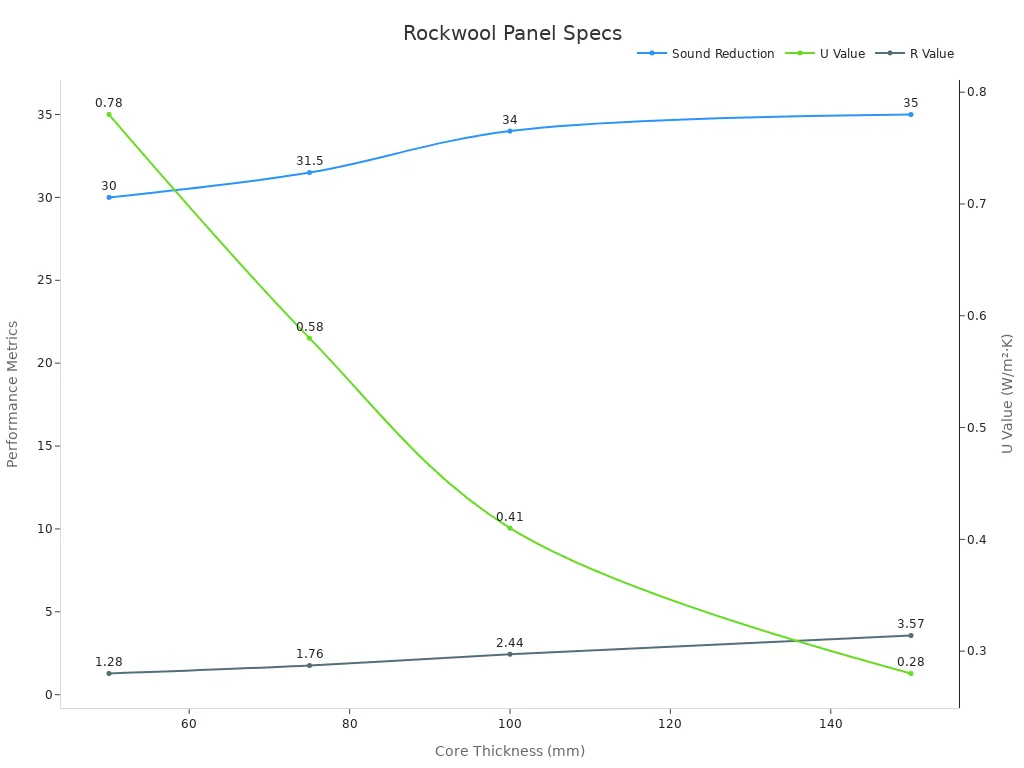
Using Rockwool sandwich panels ensures your buildings are safe and efficient. These panels are a smart choice for strong and eco-friendly construction.
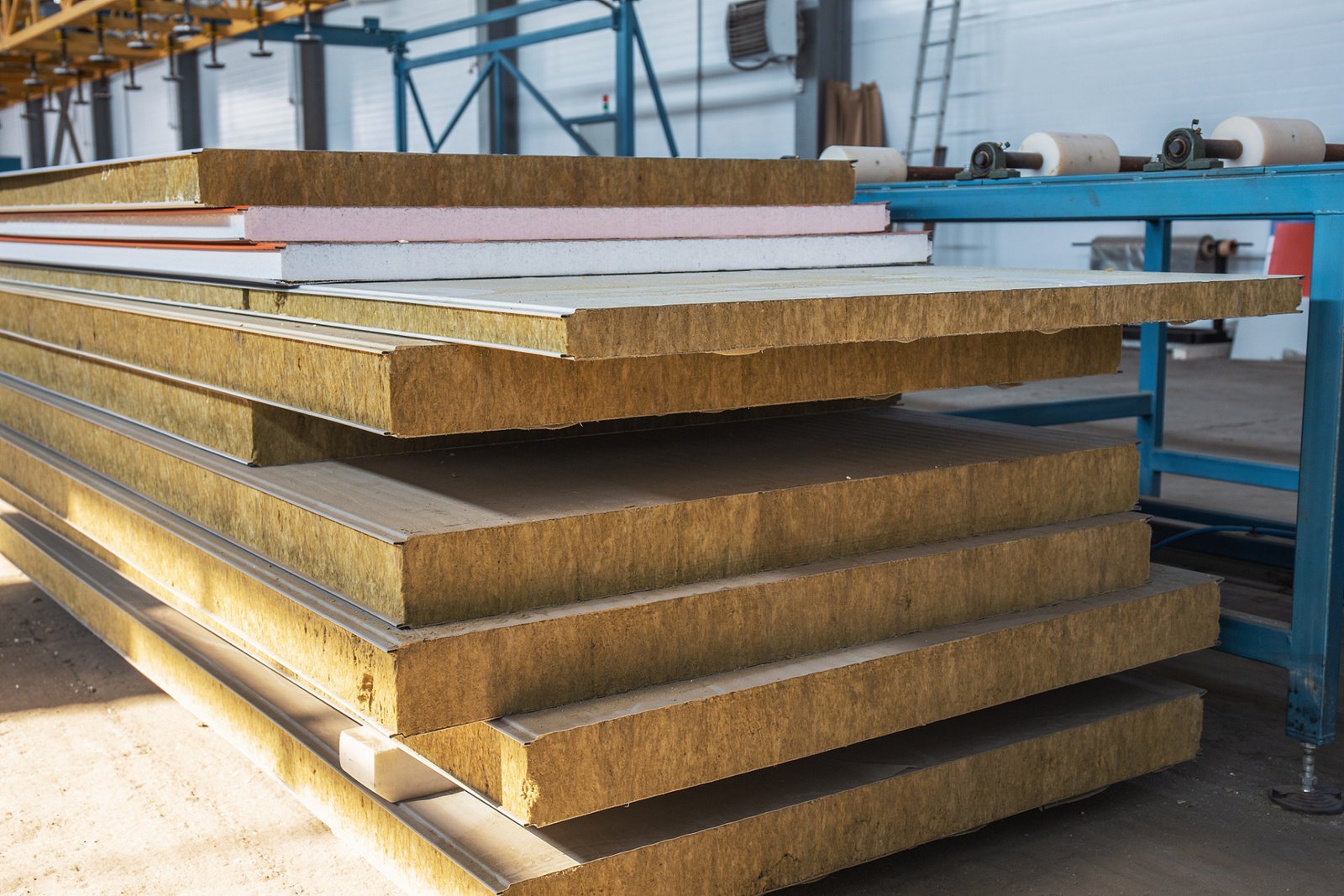
Understanding Fire Resistance Ratings
What It Means and Why It Matters
Fire resistance ratings show how well materials handle fire. These ratings are important for keeping buildings safe. They tell us how long a material can stop fire, stay strong, and protect people. Materials with high ratings act as shields, giving more time to escape and reducing damage.
In building, fire resistance has different levels. Noncombustible materials don’t catch fire or burn. Ignition-resistant materials are made to handle fire risks. Fire-resistive systems stop fire from spreading in or between buildings. For example, fire-rated materials keep fire in one area, lowering its harm.
Tests like ASTM E119 and NFPA 285 measure fire resistance. ASTM E119 checks how long a material blocks fire. NFPA 285 looks at how flames spread on outside walls. These tests make sure materials are safe and work well during fires.
How Testing and Certifications Work
Testing fire resistance uses strict methods to check safety. Two main ways are used to rate fire resistance. The first way uses tested designs, following rules like ASTM E119 and ANSI/UL 263. These tests see how materials perform in controlled settings. The second way uses designs listed in codes, like Table 721 in the International Building Code (IBC). This table shows fire performance for certain materials.
Fire tests last for 30 minutes to 8 hours. During tests, materials face heat rising to 850°C in 20 minutes. This checks if they can handle heat and stay strong.
Certifications are also key for fire safety. Standards like NFPA 286 test flame spread and smoke inside buildings. ASTM E84 checks how fast flames spread on materials. These certifications prove materials meet safety rules, so you can trust them in a fire.
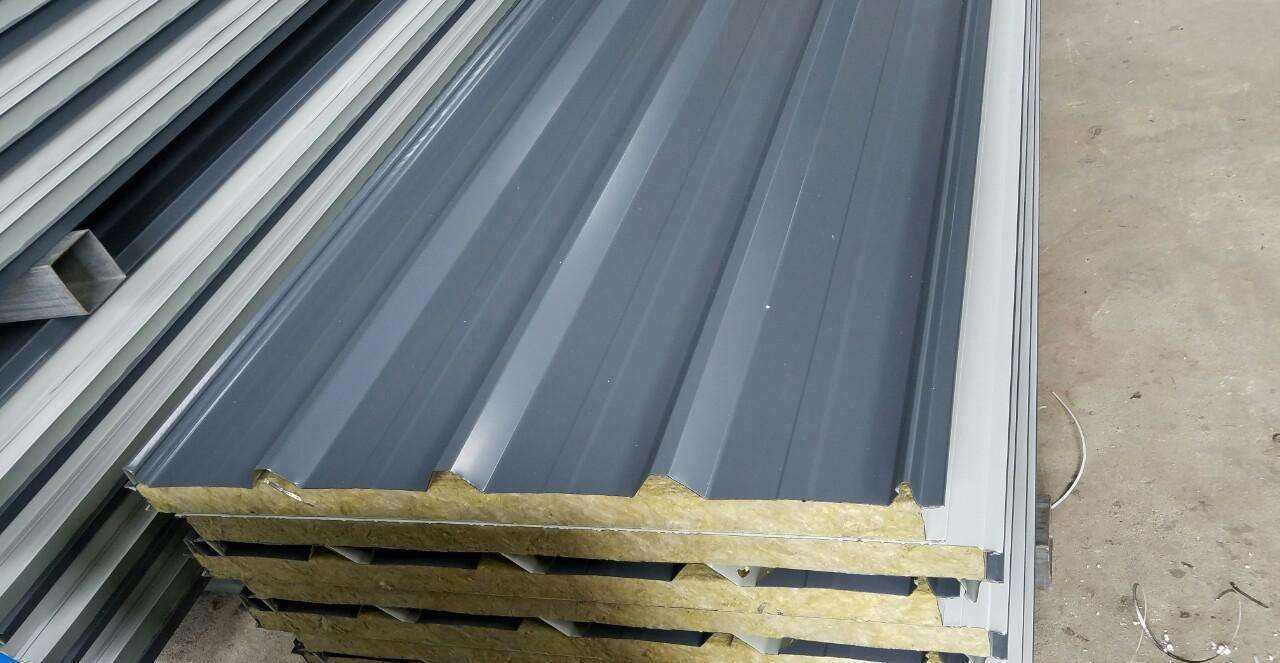
Fire Resistance Properties of Rockwool Sandwich Panels
Specific Ratings and Classifications
Rockwool panels are great at resisting fire. They are perfect for places where fire safety matters. These panels meet strict fire safety standards. For example, they follow FM Approved Class 1 rules. This means they are safe for walls and ceilings inside buildings. They also meet EN 13501-1, a European rule that rates materials like A1 and A2 as non-combustible. Another rule, EN 14509, checks insulated wall panels with metal faces in Europe.
These ratings show Rockwool panels are better at stopping fire than glasswool or synthetic cores. They can handle high heat without catching fire or spreading flames. This makes them important for keeping fires under control.
Classification Type | Description |
|---|---|
FM Approved Class 1 | Safe for walls and ceilings, meeting fire safety rules. |
EN 13501-1 | European fire rating system with classes like A1 and A2. |
EN 14509 | Checks insulated wall panels with metal faces in Europe. |
Performance Under Fire Conditions
Rockwool panels stay strong, insulated, and stable during fires. Their core material doesn’t burn, which helps them perform well. Tests exposed small samples to very high heat, up to 1002°C. Even then, the cooler side stayed at room temperature. This shows how well they block heat.
Studies prove Rockwool panels don’t break apart at 350°C. Synthetic cores fail at 250°C. Rockwool cores lose very little mass up to 300°C. They also stop flames from spreading and reduce heat transfer. This keeps people safe and protects buildings.
Important features include:
Low heat on the cooler side.
Strong panels that don’t bend or break.
No breaking apart or losing mass in high heat.
Rockwool panels are better than glasswool for fire safety. They resist heat and flames, making them the best choice for fire-safe buildings.
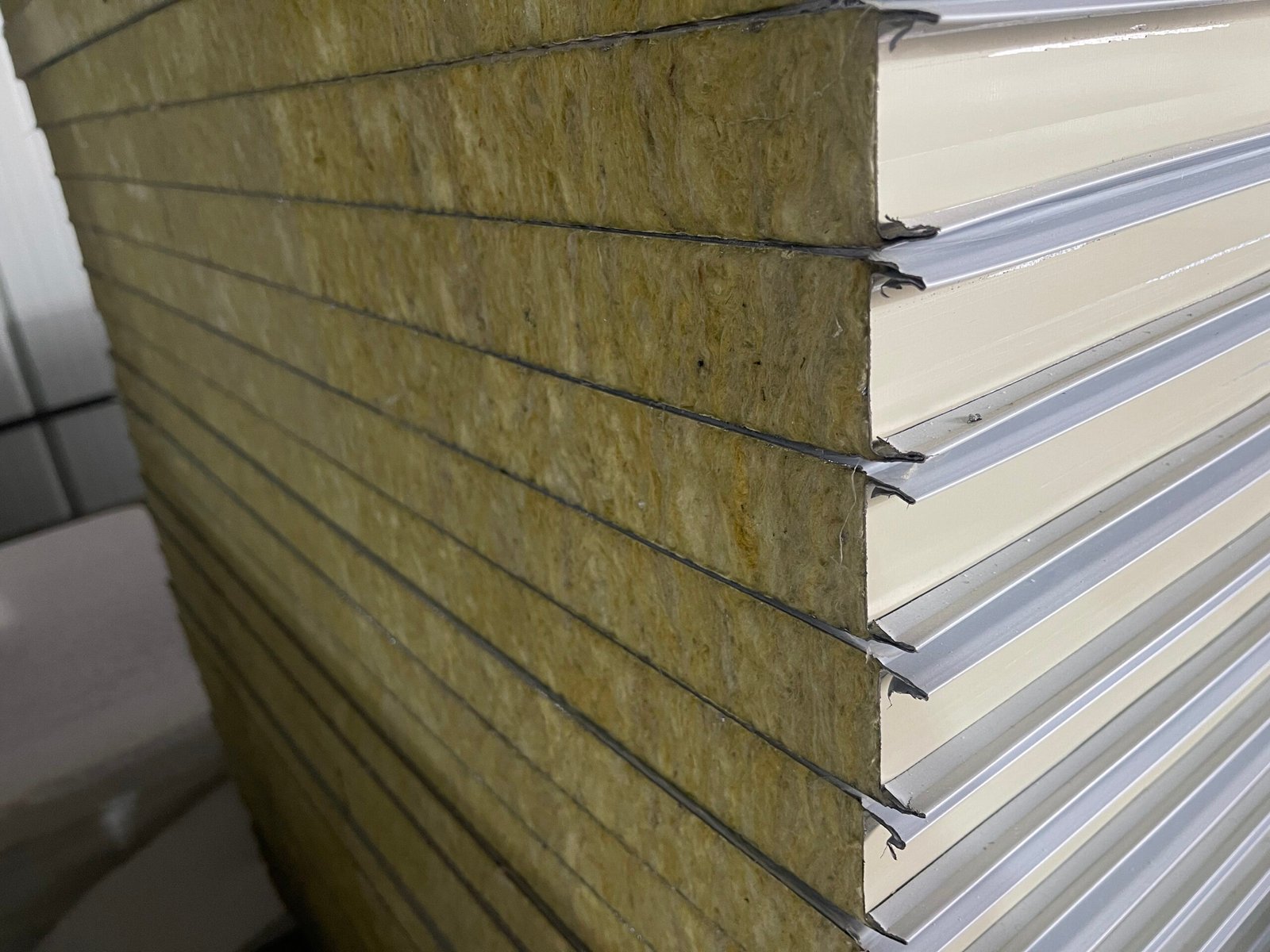
Benefits of Rockwool Sandwich Panels for Fire Safety
Advantages Over Other Wall Sandwich Panel Materials
Rockwool panels are safer than many other materials. Synthetic cores can burn or melt in high heat. Rockwool panels stay strong and resist fire. Their non-burning core protects buildings better. This makes them safer than polyurethane or polystyrene panels.
Rockwool panels also block heat very well. Their thick structure slows heat movement, keeping buildings safer. Other materials may fail to insulate during fires. Rockwool panels also don’t release harmful fumes in a fire. Some synthetic materials can release toxic smoke, but Rockwool does not. This makes them healthier and safer to use.
These panels are also long-lasting. They resist water and keep their fireproof qualities over time. You won’t need to replace them often. They are light and easy to install, saving time and money.
Contribution to Fire Prevention and Containment
Rockwool panels help stop and control fires. Their core, made from volcanic rock, blocks flames naturally. This slows fire spread, giving people more time to escape. It also reduces damage to buildings.
These panels stay strong during fires. Other materials may bend or break, but Rockwool does not. This strength stops fire from moving to other areas. It keeps people and property safer.
Rockwool panels improve fire safety ratings for buildings. They meet strict safety rules and work well in fire-prone areas. Using these panels makes buildings much safer. They stop fire, block heat, and are key for fire prevention plans.
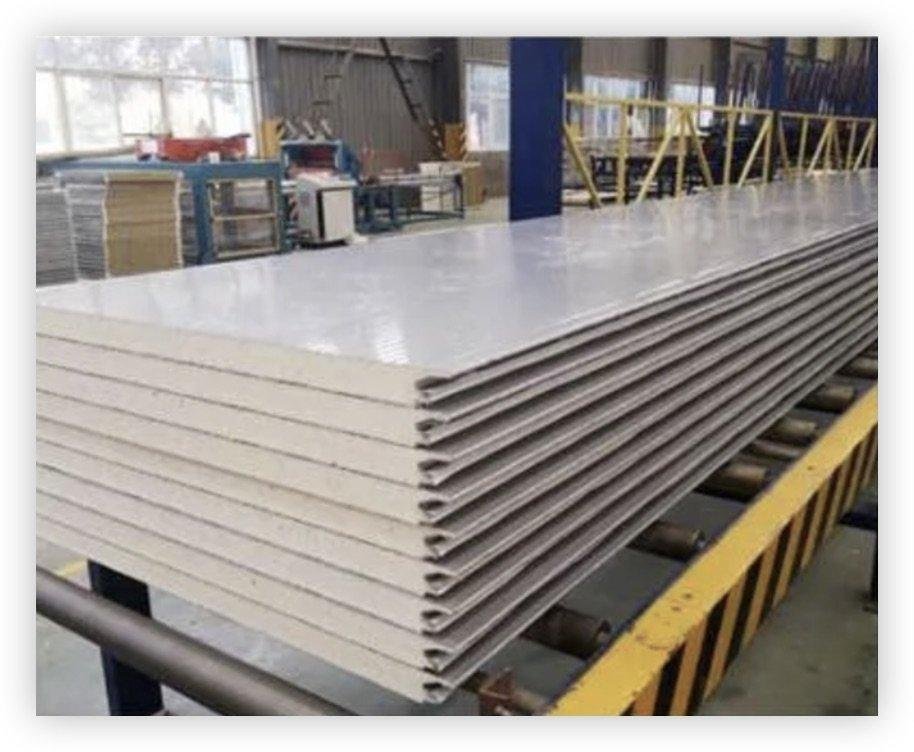
Applications in Fire-Sensitive Environments
Industrial and Commercial Uses
Rockwool panels are used in factories and warehouses. They resist fire and protect buildings from damage. These places often have flammable items and machines. Rockwool panels slow fire spread and keep areas safer. They can handle very high heat, making them dependable.
But, they must be handled carefully. In one project, workers got sick from dust due to poor handling. Another factory had worker health issues from bad ventilation and no safety gear. These examples show why safety rules are important. Using protective gear and good ventilation helps avoid problems.
Rockwool panels are also found in malls and offices. They improve fire safety and block noise. This makes spaces quieter and safer for people.
Residential and Public Buildings
Rockwool panels are great for homes, schools, and hospitals. In homes, they stop fires from spreading, giving families time to escape. They also save energy by keeping homes warm or cool.
Schools and hospitals need safe and strong materials. Rockwool panels meet strict fire safety rules. They stop fires and protect kids and patients. They don’t release harmful smoke during fires, keeping air clean indoors.
These panels are light and easy to install. This saves time and money during construction. They last a long time, making them a smart choice for fire-prone areas. Rockwool panels make homes and public spaces safer and more efficient.
Rockwool sandwich panels are great for fire safety. They can handle high heat and stop flames from spreading. This keeps people and buildings safer. These panels are strong and last a long time. They also insulate well, making them a good choice for the future. Use Rockwool panels to build safer and stronger buildings.
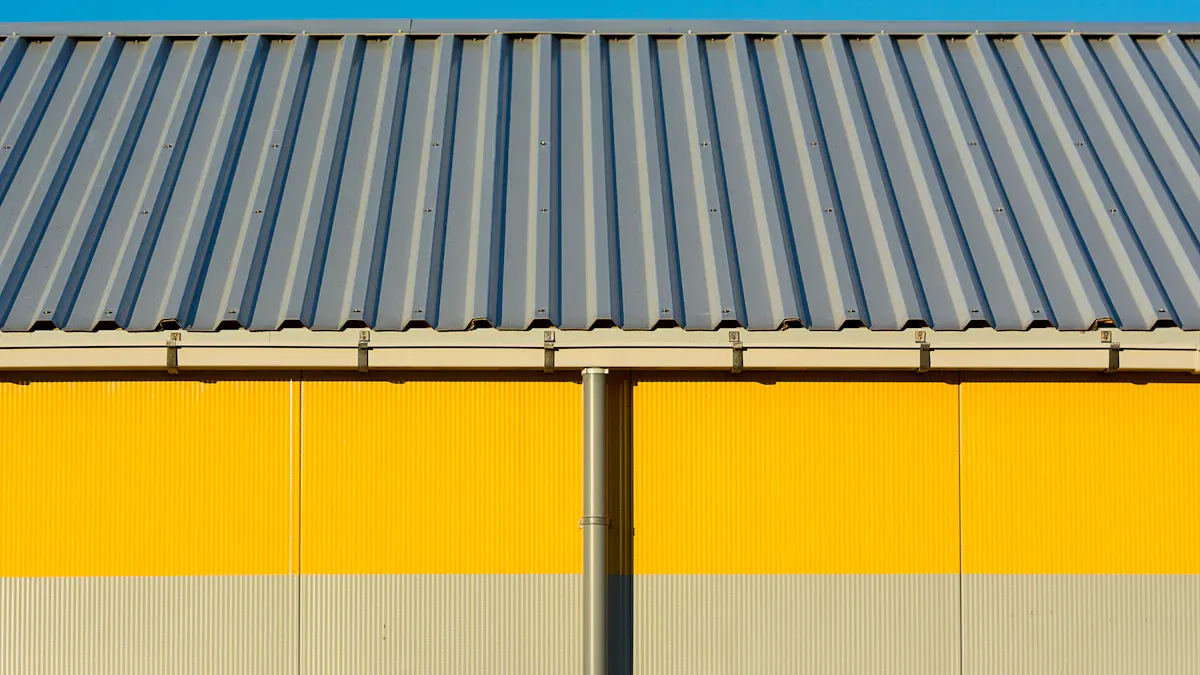
FAQ
Why are Rockwool sandwich panels fire-resistant?
Rockwool panels have a core made from volcanic rock. This core doesn’t burn and handles high heat. It also stops flames from spreading, making it great for fire safety.
How do Rockwool panels compare to other materials for fire safety?
Rockwool panels are better than synthetic cores like polystyrene. They resist fire and don’t release harmful smoke. They stay strong under heat, making them safer in fires.
Are Rockwool panels good for homes?
Yes, Rockwool panels work well in homes. They stop fires from spreading and don’t give off toxic smoke. They also insulate well and are easy to install.
Can Rockwool panels handle very high heat?
Rockwool panels can take heat over 2000°F (1093°C). They stay strong and safe even in extreme heat, protecting buildings.
Do Rockwool panels need special care?
Rockwool panels need little care. They resist fire and water, lasting a long time. Just check them for damage to keep them working well.

